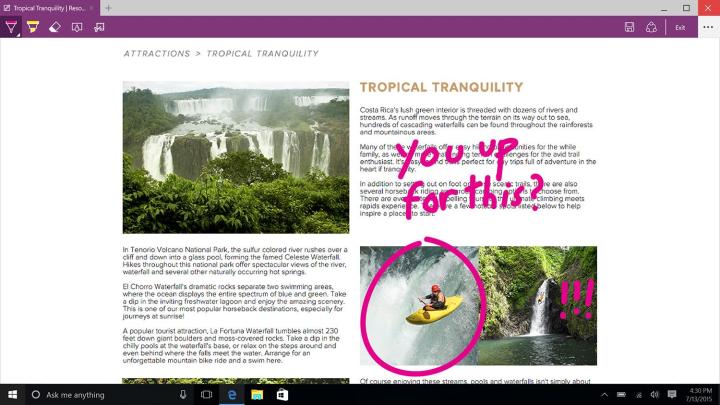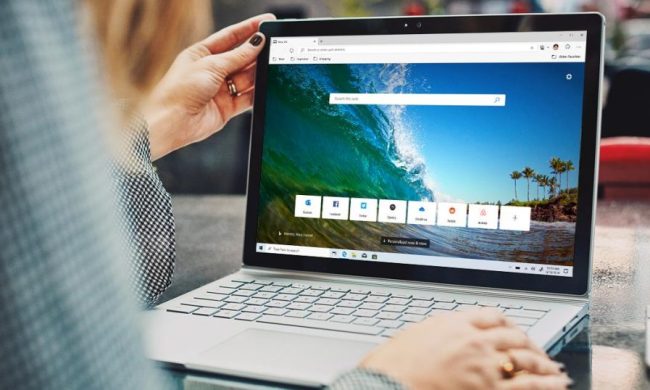
Joe Belfiore took to the stage at BUILD 2015 to reveal the news, joking that Microsoft’s PR wing were pressuring the Spartan team to start publicizing the software’s final branding rather than the temporary codename. Belfiore went on to explain that the name came from the idea of the browser being on the cutting edge of technology, as well as a desire to offer software that allows for doing rather than just browsing.
Core to that ethos is some of the new functionality demonstrated as part of the keynote. We saw some of the extensions being prepped for Edge, including the crowd-pleasing appearance of elements of the Reddit Enhancement Suite. According to Belfiore, RES implementation in Edge was ported from an existing extension for Google Chrome, and was easy to get up and running.
And it’s no one-off. The Edge browser will apparently support extensions from both Chrome and Firefox at release. The details of how this works, such as how users download and install extensions, are uncertain. We’ll no doubt learn more as Windows 10 edges closer to release.
Like much of Microsoft’s BUILD keynote, the company spared no opportunity to address the developers present directly. Edge is designed to give end users new ways to interact with the code behind websites, offering new and more nuanced avenues for interactivity.
One of the most marketable methods of doing so, if not the most complex, is the ability to doodle and make notes over websites — functionality that dominated a compilation of footage that was shown to introduce Edge. This is certainly a feature that pairs well with Microsoft’s desire to offer the experience of desktop on a tablet, but it remains to be seen whether it turns out to be more than a gimmick.
Aside from the note-taking, it’s clear that Edge is a clean-looking Spartan browser. No word was given on plans to release the software, so it seems likely it will debut alongside Windows 10.


